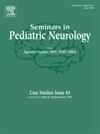诊断和治疗差距
IF 2.1
4区 医学
Q2 CLINICAL NEUROLOGY
引用次数: 0
摘要
在低收入和中等收入国家,特别是撒哈拉以南国家,由于社会经济挑战、基础设施不足以及获得诊断、治疗和护理的机会有限,癫痫治疗差距很大。诊断差距进一步加剧了这种情况,由于缺乏熟练的卫生保健专业人员、诊断设施不足以及获得专门护理的机会有限,许多患者仍未得到诊断或误诊。采用可持续解决办法、优先考虑地方自主权、能力建设和社区参与的综合办法对于弥合癫痫治疗和诊断差距至关重要。这包括神经病学社区和意见领袖以及决策者之间的合作努力。有针对性的解决方案,如通过当地相关项目培训更多的神经科医生,培训初级和社区卫生保健工作者进行任务转移和任务分担干预。加强供应链和采购流程,确保持续供应负担得起的抗癫痫药物。促进利用智能手机录像、远程脑电图和远程医疗工具等技术至关重要。需要进一步收集包括疾病负担登记在内的数据,以加强诊断分类的一致性、后续行动和对供应链效率的理解。在这些临床干预措施的基础上,开展公众意识运动和政策改革,以减少耻辱感和促进包容性,对于缩小癫痫治疗和诊断差距至关重要。研究应侧重于了解造成治疗和诊断差距的社会经济和公共卫生因素,并评估已推出的干预措施的有效性。本文章由计算机程序翻译,如有差异,请以英文原文为准。
Diagnostic and treatment gaps
The epilepsy treatment gap in low- and middle-income countries especially sub-Saharan countries is substantial, driven by socioeconomic challenges, inadequate infrastructure, and limited access to diagnosis, treatment and care. The diagnostic gap further compounds this, with many patients remaining undiagnosed or misdiagnosed due to lack of skilled healthcare professionals, inadequate diagnostic facilities, and limited access to specialized care.
A comprehensive approach that uses sustainable solutions, prioritizing local ownership, capacity building and community engagement are crucial for bridging the epilepsy treatment and diagnostic gaps. This includes a collaborative effort between the neurology community and opinion leaders as well as policy makers.
Targeted solutions such as training more neurologists through locally relevant programs and training of primary and community healthcare workers for task-shifting and task-sharing interventions. Also strengthening supply chains and procurement processes to ensure constant supply of affordable antiseizure medications. It is critical to promote leveraging of technology such as use of smartphone video recordings, remote EEG and telemedicine tools. Further collection of data is needed inclusive of registries for disease burden, to enhance consistency in diagnostic categorization, follow up and understandings of supply chain efficiency. Overlying these clinical interventions implementation of public awareness campaigns and policy reforms to reduce stigma and promote inclusivity are critical for bridging the epilepsy treatment and diagnostic gaps.
Research should focus on understanding the socioeconomic and public health factors contributing to the treatment and diagnostic gaps, and evaluating the effectiveness of rolled-out interventions.
求助全文
通过发布文献求助,成功后即可免费获取论文全文。
去求助
来源期刊

Seminars in Pediatric Neurology
CLINICAL NEUROLOGY-PEDIATRICS
CiteScore
4.80
自引率
0.00%
发文量
38
审稿时长
84 days
期刊介绍:
Seminars in Pediatric Neurology is a topical journal that focuses on subjects of current importance in the field of pediatric neurology. The journal is devoted to making the status of such topics and the results of new investigations readily available to the practicing physician. Seminars in Pediatric Neurology is of special interest to pediatric neurologists, pediatric neuropathologists, behavioral pediatricians, and neurologists who treat all ages.
 求助内容:
求助内容: 应助结果提醒方式:
应助结果提醒方式:


